Eero vs Google WiFi: Pros & Cons
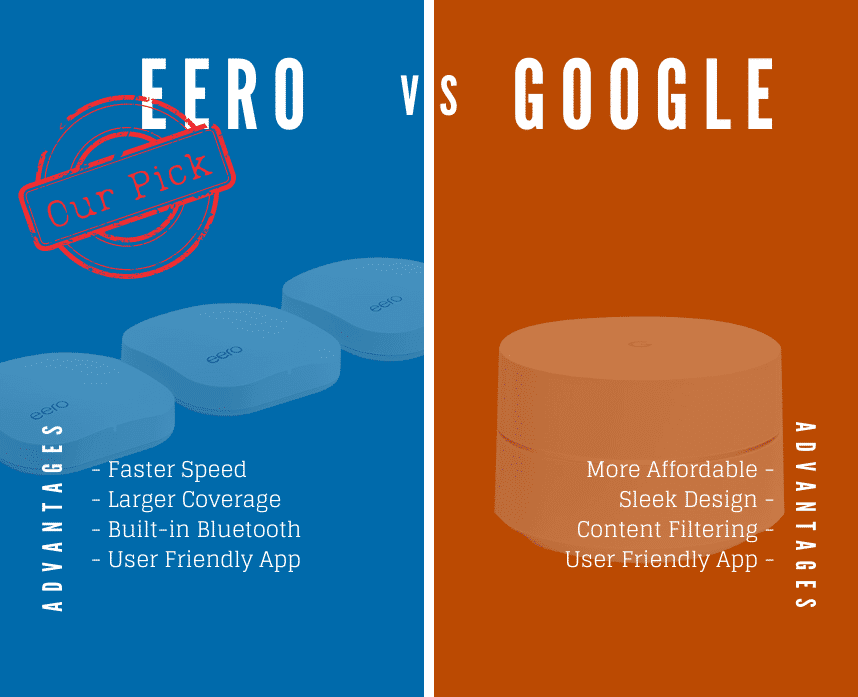
Eero vs Google WiFi are two of the most prominent WiFi systems available today. Along with the Netgear Orbi, and the Linksys Velop, these two systems are without a doubt the most-used, most-trusted, and most-talked about systems on the market.
They share a ton of similarities, both being extremely well-designed systems geared more towards stability than speed.
Both the Eero and Google WiFi are “mesh” systems, meaning they use one main router and multiple secondary units. These secondary units, placed strategically within your home, connect to the main-router (or to each other. If daisy chain is supported), spreading the WiFi all throughout your home and creating a “mesh” for your devices to connect to.
These mesh systems eliminate annoying dead zones, making them great for large homes or homes with unusual layouts.
As technology advances and more and more appliances become WiFi-enabled, the importance of advanced WiFi systems like these is rapidly increasing.
Mesh systems are superior to traditional routers in almost every way. But how do these two mesh systems stack up against one another?
Eero, a pioneer in the industry, has developed a modern, extremely attractive system. Their units are by far the smallest, least obtrusive routers on the market.
Their small design makes them easy to place anywhere in your home. Eero is widely considered the best-looking system out there, and I have to agree.
But even more so than being attractive, Eero is known for the strong, seamless blanket of WiFi it provides. The one place where Eero is criticized and begins to fall behind its competitors is in the size of its coverage area.
Each unit covers only about 1,000 sq. ft. Although Eero does offer a pro pack of 3 routers which should be able to blanket a 3,500 sq. ft. home in powerful WiFi.
The setup for the Eero system is exceedingly user-friendly and easy. While pricy, with the Eero system you get what you pay for, and that is an excellent blend of power, reliability, usability and style.
Unlike Eero, Google is a relative newcomer to the mesh WiFi market. Despite this, Google has managed to quickly establish itself near the top of the industry.
Google WIFi is undoubtedly the most affordable option today. As well as this nice price tag, Google WiFi offers solid, reliable coverage that, while probably the slowest of the popular mesh systems, can still easily outperform traditional routers.
Enjoy a fast signal in every room, on every device. Amazon Eero is a new type of connected system that replaces your router for seamless coverage throughout your home. Enjoy a fast signal in every room, on every device thanks to a new type of connected system.
Similar to the Eero, the Google WiFi units are extremely attractive. While not quite as small as the Eero, Google’s units are tiny compared to most competitors, making them unobtrusive and easy to place.
However, Google neglected to include active ventilation, meaning that you’ll need to place the units somewhere in the open to avoid the risk of overheating. While this isn’t a big deal, it does take away some of the total care-free placement Eero-users enjoy.
Google WiFi, while not the best in terms of raw performance, gives users incredible value for their money.
How I Tested Eero Vs Google WiFi
Anytime I test products, I first go through the setup and installation process, trying to keep users of all different knowledge-levels in mind. Both products were very simple and easy to set up. It’s clear that both companies have made the average user their main priority.
After setup, I connected my device to the newly available network and tested the connection speeds at different distances from the router.
I started with the Eero Home WiFi system. From 5-10 feet away from the main router, my average speed was about 380 Mbps. As I moved farther and farther away from the router, the speeds unsurprisingly decreased.
At about 35 feet away, my speeds fell to an average of 175 Mbps. After this, I hooked up the beacon units. With my device connected to one of these secondary units, the speeds were a bit slower but not different from those provided by the main router. This consistency is impressive.
Next up was the Google WiFi system. I put it through the same exact testing. At 5 to 10 feet from the assigned main unit, I got an average speed of just below 300 Mbps. Again, my speeds began to drop as I moved further away, until, at about 35 feet, I tested an average speed of 110 Mbps.
I then hooked up all three nodes and tested them again. With my device connected to one of the Google WiFi units not assigned as the main router, my speeds dropped a bit, but not significantly.
My testing proved what I already knew: both the Eero and Google WiFi are two of the slower systems on the market. This isn’t that bad, however, as “slow” is only relative to the speeds provided by other powerful mesh systems.
Both Eero and Google WiFi provide faster speeds than traditional routers, all with more reliability and no dead-zones.
Why You Can Trust My Tests And Reviews
I have a Bachelor’s degree in IT and I’ve spent decades obsessing over technology. I have a thorough understanding of mesh router systems and I’ve tested most eero routers and Google WiFi routers.
I bought these routers with my own money and I actually tested them.
The photo below shows the actual router in my hand.
You can trust my review and testing in this eero vs Google WiFi review.
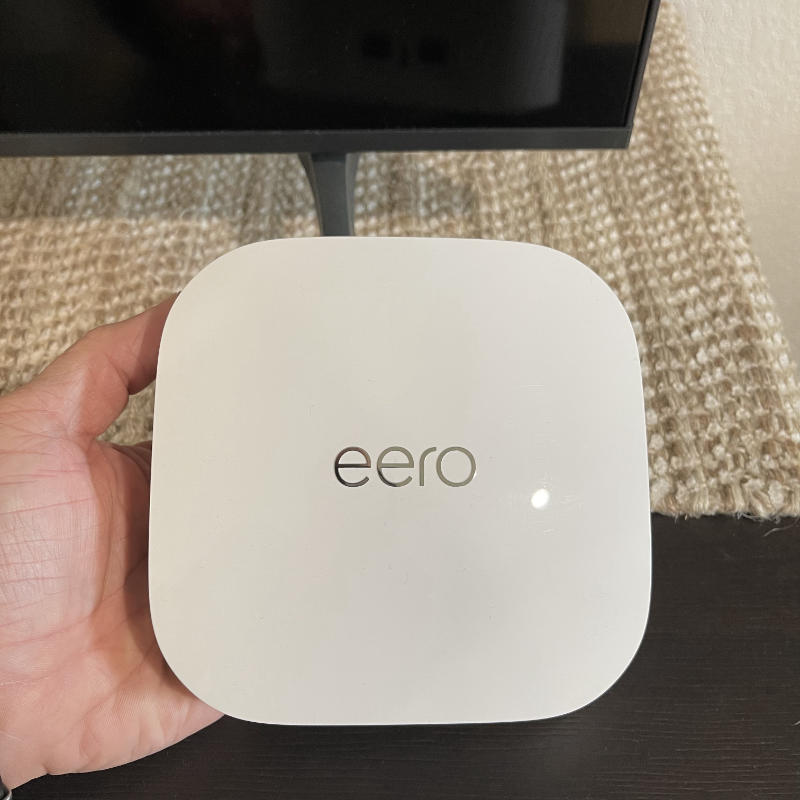
Eero vs Google WiFi: Similarities and Differences
Eero Mesh WiFi System
The Eero system comes with one main router, and one or more “beacon” units. Each of these beacon units covers an area of about 1,000 sq. ft, and you can purchase as many of these as your home needs. The Eero units are very small and lie flight instead of standing upright, making them less visually and physically intrusive in your home.
Not that you would mind these units being seen. The Eero Home WiFi system is modern and attractive, its minimalistic design allowing it to easily blend in with its surroundings.
The LED indication-light featured on the Eero is well done. There’s one small light on the face of each unit. This light turns a solid white when connected to the internet, solid red when unable to connect, and flashes green when experiencing system errors.
While this light system has some limitations compared with blinking array of LED lights featured on traditional routers, Eero has managed to design a stylish alternative that doesn’t give up too much functionality.
The only negative aspect of Eeros physical design is the lack of ethernet ports.
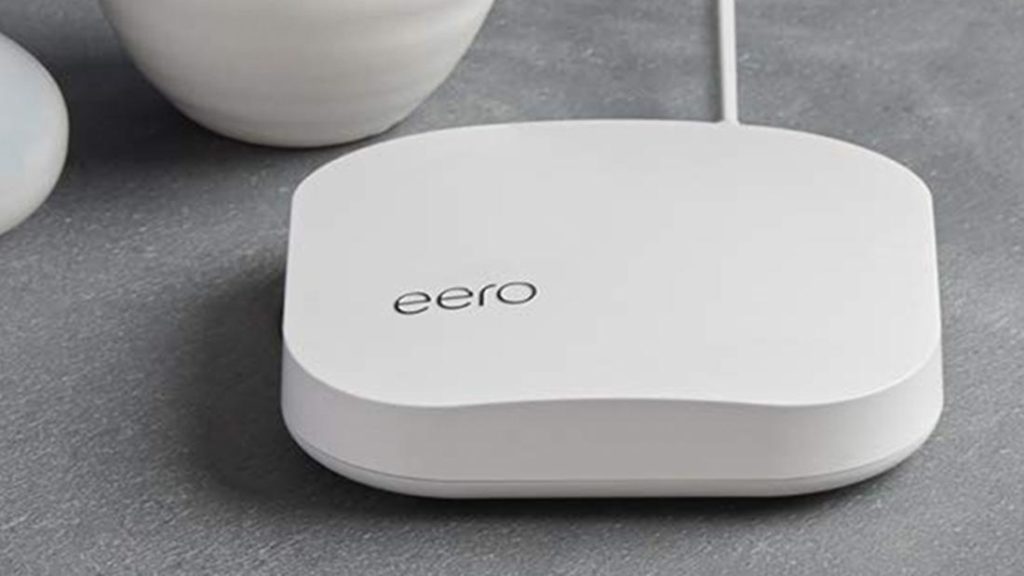
Google WiFi
Google has developed an extremely stylish product and is the only other system that can rival the superb design of Eero. The Google WiFi system features one or more units, any one of which can be designated as the main router.
These units boast a smooth, white finish, and are small and cylindrical, making them easy to place conveniently throughout your home. While not quite as minimalistic as the Orbi, the Google WiFi units blend in unobtrusively to any type of home.
The LED indication light featured on these units is quite attractive. Each unit is divided vertically by a small crevice that runs around the center. It’s from this crevice that the LED light is displayed. The color coordination used by Google is simple and easy to understand.
When everything is working properly, the light coming out of the unit is green. When an error occurs, the light turns red. When the device is returning to factory settings, the light turns blue. And if internet connection is lost, the light flashes orange.
Overall, Google WiFi features an attractive and modern physical design.
These are two of the best-looking systems on the market today. Neither is too tall; neither is at a risk of falling over; both are small and unobtrusive; both are modern; and conversely both lack ethernet ports.
While these are two beautifully designed systems, I have to give the edge to Google WiFi for its cylindrical design and well-done lighting system.

Setup
Eero Mesh WiFi System
Of all the popular WiFi systems on the market today, Eero might be the easiest to install. The company consistently receives rave reviews for their painless setup and configuration process.
All you need to do is plug in the units, download Eero’s app on your mobile device, and follow the step-by step instructions.
After setup, you’ll be able to use the app to easily manage your WiFi settings, control device usage, and access the many features that Eero offers its users.
The “Guest-WiFi” feature lets you give guests access to your WiFi without having to hand over your home password, while the “Family Profile” feature lets you pause internet access for certain devices.
Eero also offers an Eero Plus monthly plan which gives you access to advanced parental controls and much-improved protection for your WiFi network.
The setup is quick and hassle-free, and after installation, Eero automatically updates and troubleshoots itself. The only potential downside is that Eero doesn’t have a web-based interface. This lack of advanced-customization can leave some tech-savvy users underwhelmed and dissatisfied.
Google WiFi
When it comes to configuration and maintenance, Google is a pioneer. With a strong focus towards mainstream usability from the start, Google WiFi was the first system to have the entire setup-process done through an app instead of a web-based interface.
Setting up your Google WiFi system couldn’t be easier. You simply plug in the nodes, download the app on your device, and follow the instructions. The entire process took us about 5 minutes and was easy enough for even the most technologically challenged users to breeze through.
Once you’re all set up, you can use Google’s convenient app to broadcast guest WiFi, create schedules for certain devices, as well as access parental control features such as SafeSearch and Site Blocking. Unlike Eero, all features are included with the Google WiFi system for no extra charge.
While the extremely easy-to-use app is great for the majority of users, the lack of web-interface means that the more knowledgeable users will probably find it shallow and unappealing.
The setup for Google WiFi and Eero is remarkably similar. These are probably the two easiest products to install on the market today, and either system is a great choice for users who are easily intimidated by complicated technology.
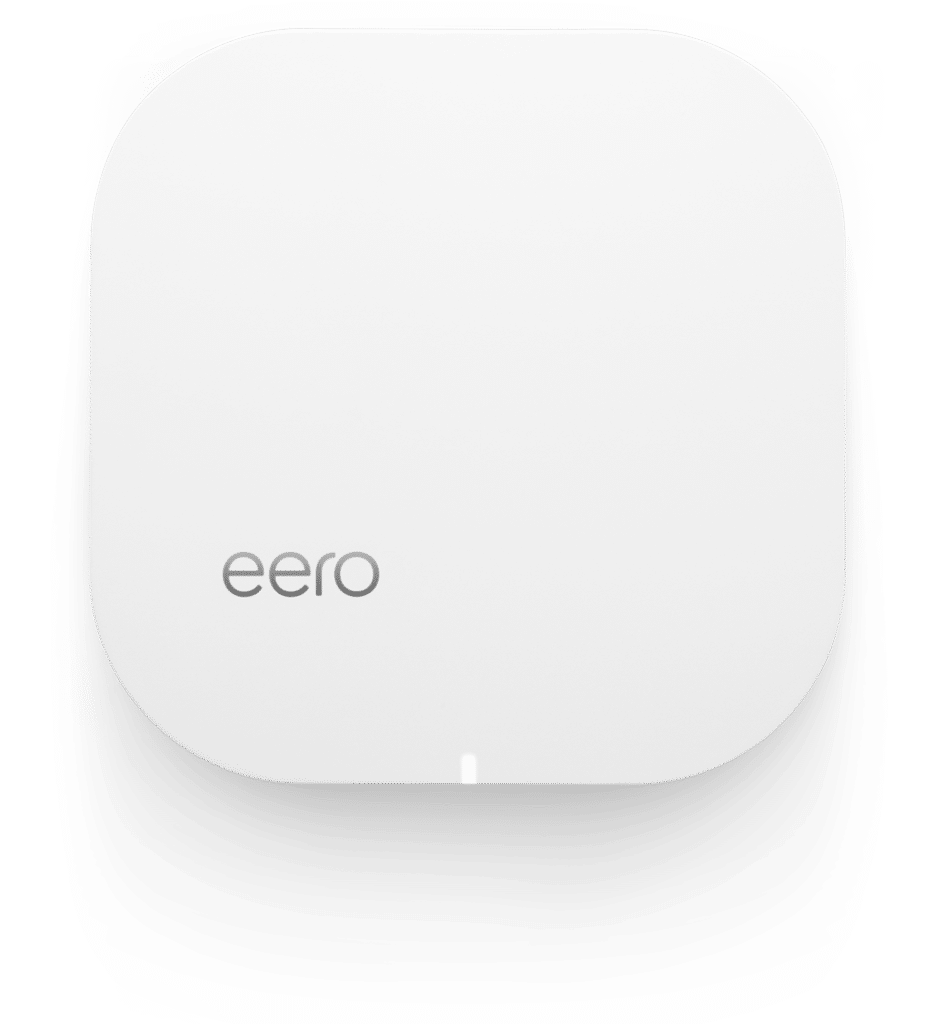
Eero Mesh Wifi System
eero delivers world-class, whole-home connectivity for everybody. An eero 3-pack covers homes up to 5,000 sq. ft. in fast, reliable WiFi from the basement to the backyard. eero seamlessly connects your entire home with reliable WiFi.
Both systems make use of exceedingly simple apps to handle all configuration and feature management, and neither requires any tech-knowledge. Alternatively, both systems lack the in-depth customization that a good web-based interface provides.
In such a close race, the deciding factor is again Google’s affordability. While Eero (already the more expensive of the two systems) requires users to pay a monthly fee for some of the advanced features, Google WiFi offers those same features for free.
Though both systems are great, Google WiFi gets the edge here.
Performance
Google WiFi
Originally known for their massively popular search-engine, Google has become a tech powerhouse. Google’s brand has become so well-known and far-reaching that it was little surprise to anyone when the company decided to get-involved in the mesh WiFi market.
A “mesh” WiFi system is a system that, as opposed to using one main router, uses multiple units to spread uninterrupted WiFi throughout your home.
There’s usually one main unit and multiple secondary units. These secondary units connect back to the main router, and sometimes to each other, creating a blanket or “mesh” of signals all throughout your home.
Your devices connect to this mesh instead of having to go all the way to the router, allowing you to access undiminished WiFi regardless of distance. These systems, while long-since loved by tech-nerds, are increasingly finding their way into the homes of average users.
Google has been a big part of this advance, their resources allowing them to boldly market their system as well as sell it at an affordable price. But how does Google’s version of this advanced WiFi system compare to the more elitist systems on the market? Not well in some areas, speed being the most notable.
Google WiFi is probably the slowest mesh WiFi system on the market, but not by a large margin. Google WiFi is still far faster than most traditional routers, and plenty fast enough for the average user.
As well as effortless usability and an affordable price tag, reliability is the thing that sets Google apart from the competition. Google WiFi uses Network assist technology. This technology scans the wireless spectrum to determine the closest convenient node, and the fastest route for the data.
Google also uses self-healing technology, meaning that if a node fails, the data is automatically rerouted to the next-best available node. This technology takes full advantage of every unit in your system, ensuring that you never have to deal with bad connections.
This valuable reliability makes Google WiFi a great choice for anybody who uses their internet connection for time-sensitive matters, which, in the modern world, is a lot of us.
As reliable as it is, some people still experience error lights. If you’re experiencing a blue light error on your Google WiFi router, Router Freak actually has a great guide to help you solve it.
When talking about reliability, however, it must be noted that Google still uses dual-band technology, whereas most of its competitors have upgraded to tri-band.
A dual-band system broadcast two separate signals, one powerful 5 GHz signal for modern devices to connect to, and one weaker 2.4 GHz signal for any older devices that might not otherwise be compatible. A tri-band router broadcasts three separate signals, one 2.4 GHz signal for older devices, as well as two 5 GHz signals.
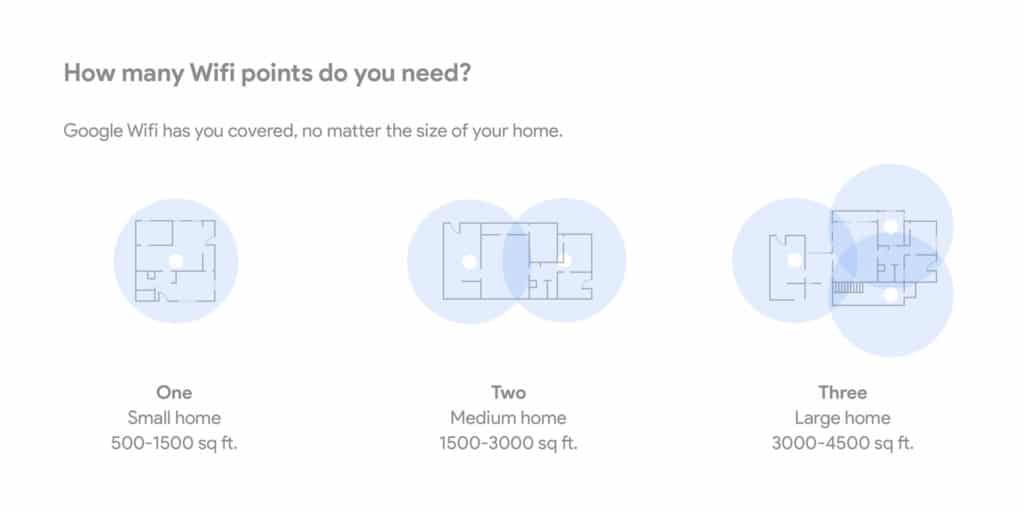
Since available speeds are divided amongst all devices connected to a network, having two separate 5 GHz signals allows you to use several demanding devices at once without compromising speeds.
Google WiFi’s dual-band system is undoubtedly less robust than these tri-band systems, and, while this may be a concern for some, there are a lot of users who will probably never have need of two separate 5 GHz signals.
Another thing to consider is that Google WiFi goes through significantly fewer firmware updates than most of its competitors. While this could be viewed negatively by the most ambitious users, when first released, these updates have the potential to devastate your WiFi.
While the respective companies usually manage to perfect these updates in a timely manner, this can still be quite troublesome for users who demand consistent WiFi with no exceptions. For these users, the steadfast Google WiFi system is a great choice.
Eero Mesh WiFi System
Eero is a company known for innovation and improvement, their second-generation product being far superior to the first-gen. Eero is now a tri-band system, and, unlike the tri-band Netgear Orbi which chooses to devote one of its two 5 GHz networks entirely to the use of backhaul, the Eero system gives its users constant access to both 5 GHz networks.
For sure, eero is one of the best router companies you can buy from.
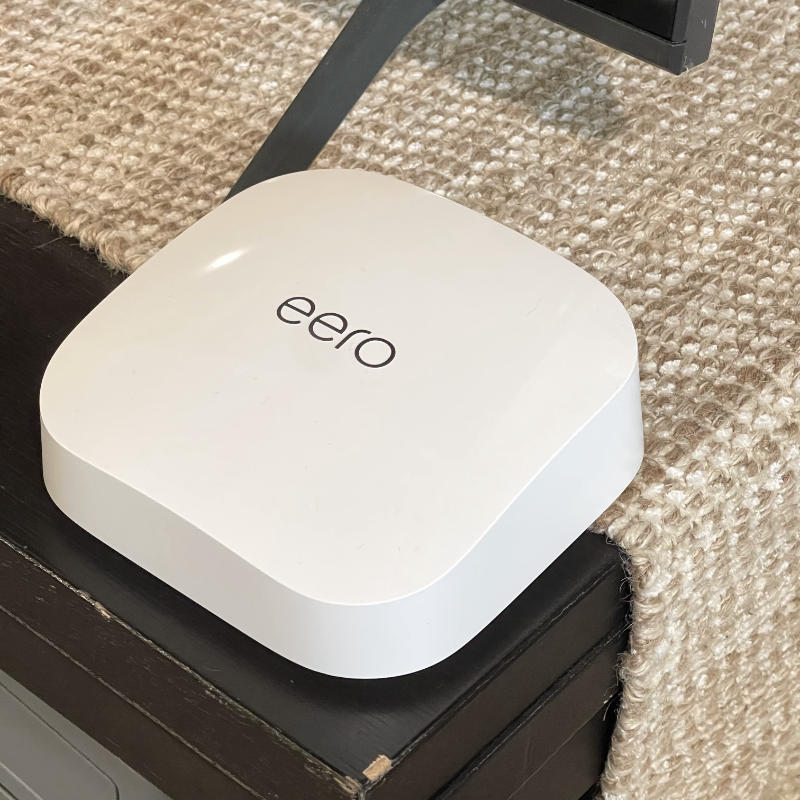
It must be noted, however, that only the main router is tri-band; the beacon units are only dual-band, making the Eero Home Wifi system more of a half-and-half system. Eero does offer a “pro” package that features three of the main units, leaving out the smaller dual-band beacons altogether.
Eero did quite well in my speed tests, outperforming the Google WiFi system, while also showing great consistency.
Somewhat similar to Google WiFi, the one area where Eero struggles is in area coverage. Three different Eero packages can be purchased. The smallest package features 1 Eero main router and 1 Eero beacon offering up to 2,000 sq. ft of coverage.
The middle package includes 1 main router and 2 beacon units. Each additional beacon unit added to the system provides an extra 1,000 sq. ft of coverage, which takes the coverage for this middle package up to 3,000 sq. ft.
The largest package offered by Eero is the Eero Pro package which includes 3 main routers and covers areas up to 3,500 sq. ft. If your home is bigger than this, you’ll need to purchase additional beacon units.
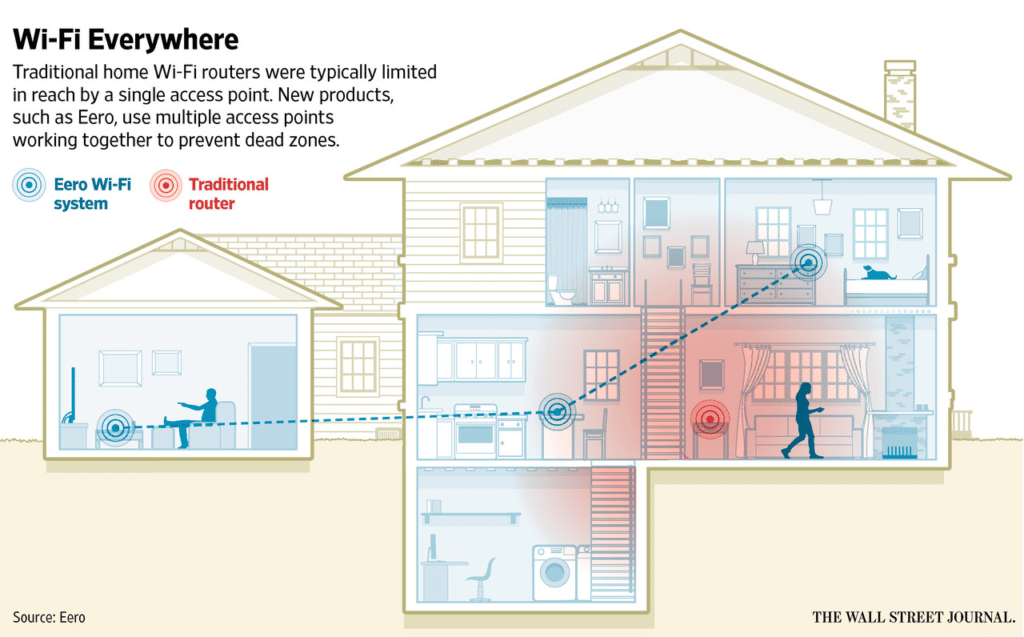
Again, the similarity between these two systems makes itself known. Both the Eero and Google WiFi systems are slightly slower than their competitors and offer less coverage area while providing insane reliability.
Eero is definitely faster than Google WiFi, and yet Google WiFi offers a better coverage area. The only thing that really separates the two is that at least 1 Eero unit is tri-band, while Google remains behind the curve with its dual-band devices.
Eero Features
Alternatives
Netgear Orbi
Both the Eero and Google WiFi systems have relatively small coverage areas, making them less than ideal for users with larger homes. One good alternative is the Orbi WiFi system from Netgear.
This powerful mesh system offers over 5,000 sq. ft of excellent coverage with just 2 units. While the Orbi system is on the expensive side, if you have a big enough area to make use of the extensive coverage, it can be well worth the price.
The Netgear Orbi is also the fastest mesh WiFi system on the market right now.

Alternative Pick: Netgear Orbi
Bring fast, secure, and reliable internet to your entire family with the NETGEAR Orbi Home WiFi System. The Orbi WiFi Router and Satellite extend high-performance WiFi to your property from the basement to the backyard. The system smartly manages your WiFi so that each device’s access is optimized and never interrupted.
Who Should Get This?
Eero Mesh WiFi System
While some WiFi systems are exceedingly fast and cover huge areas (Netgear Orbi), and others are exceedingly affordable (Google WiFi), Eero often finds itself holding the middle-ground.
Eero is a great choice for users seeking WiFi that, while not the fastest on the market, is very fast, and, while not the cheapest, can be an affordable option for users with smaller homes. After all, purchasing a lightning-fast, far-reaching WiFi system, like the Netgear Orbi, for a 1,000 sq. ft apartment, would be overkill.
Eero is an elite WiFi system that uses tri-band technology and provides excellent coverage and good value for small to medium-sized homes. This product is perfect for anybody looking to hit that sweet spot with their WiFi system.
Google WiFi
Google WiFi is similar to Eero in its shortcomings: slower speeds and smaller coverage area. Between the two systems, Google WiFi is the less advanced and worse performing product, though not by much. And Google WiFi more than makes up for this by being the most affordable WiFi system on the market.
With Google WiFi, you’ll be getting a beautiful, modern mesh WiFi system far superior to traditional routers, at an affordable price. Google WiFi is great for any technologically-disinclined users, or anybody on a budget.
The Bottom Line
Given the similarities between the two systems, and the variabilities of needs amongst users, this choice was not an easy one.
But overall, Google WiFi had a little bit more going for it.
Although the Eero is the better product in terms of performance, Google WiFi’s great affordability paired with the larger coverage area, makes it the better choice for a larger number of users, making it my pick.
It really comes down to the specific needs and preferences of the individual, however.
Overall, these are two great systems, and its not hard to see why they’re at the forefront of the mesh WiFi market today.


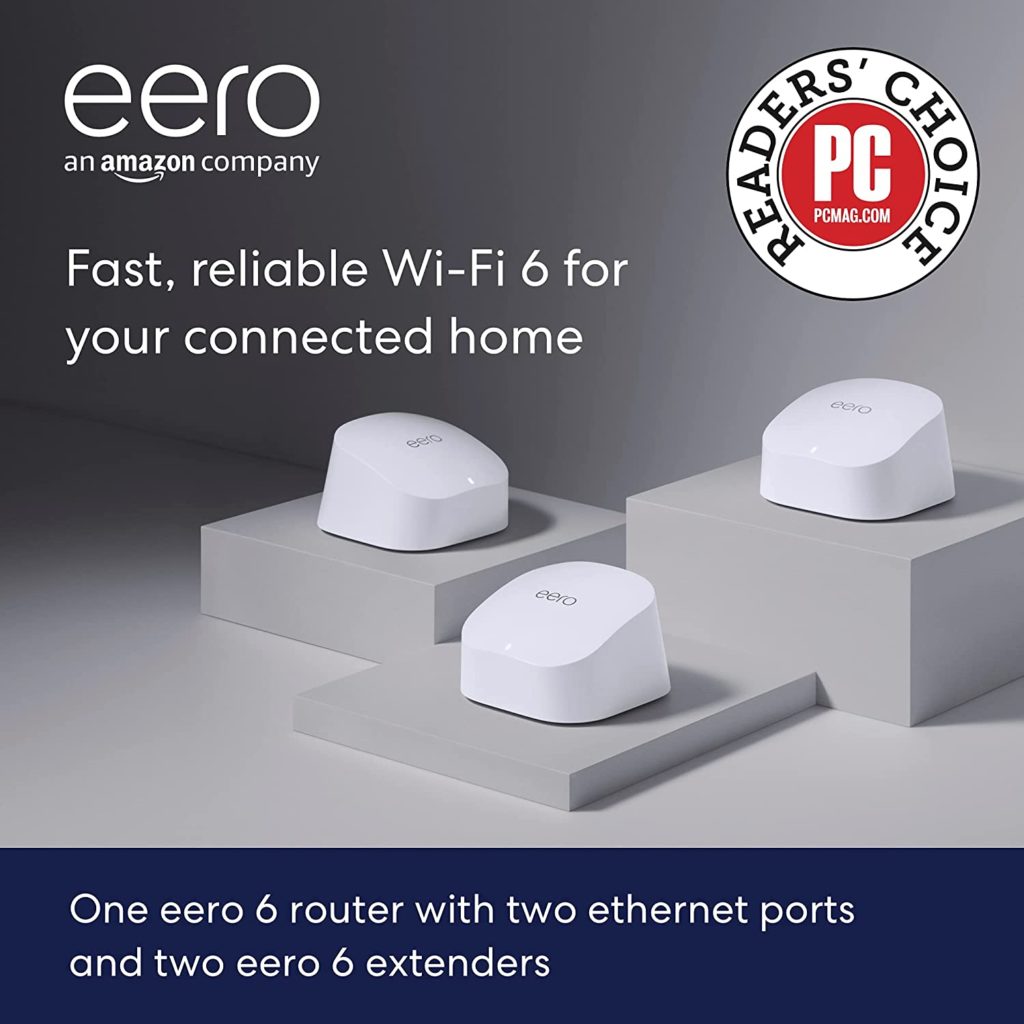
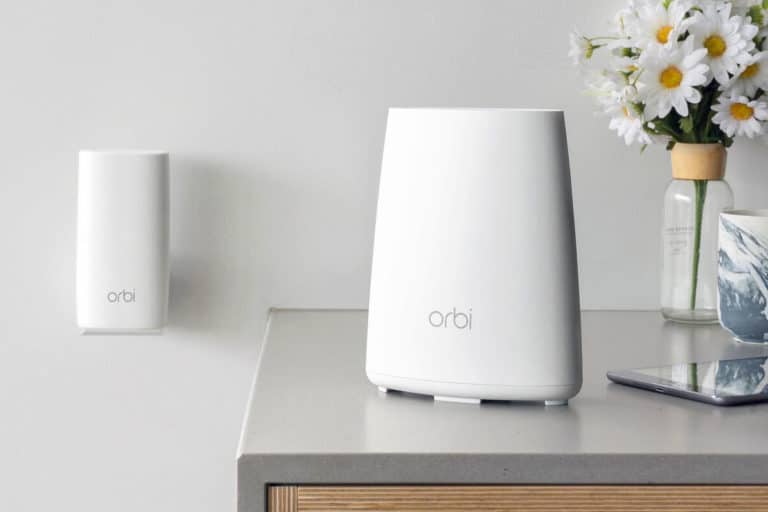
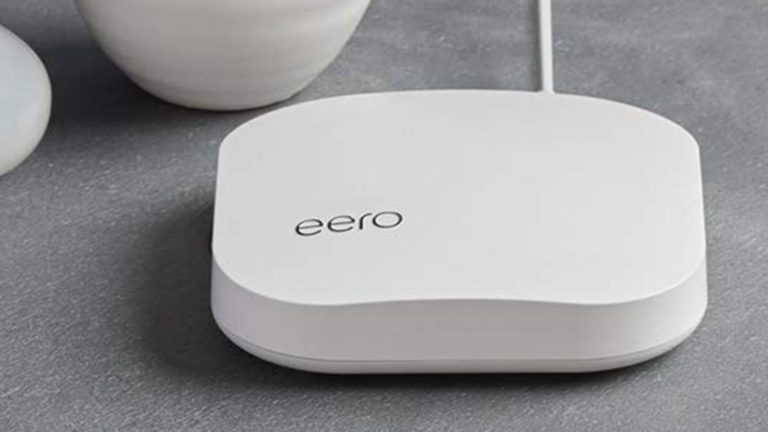
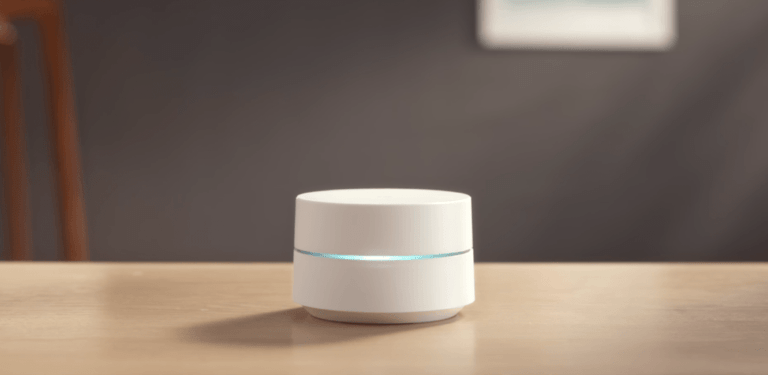
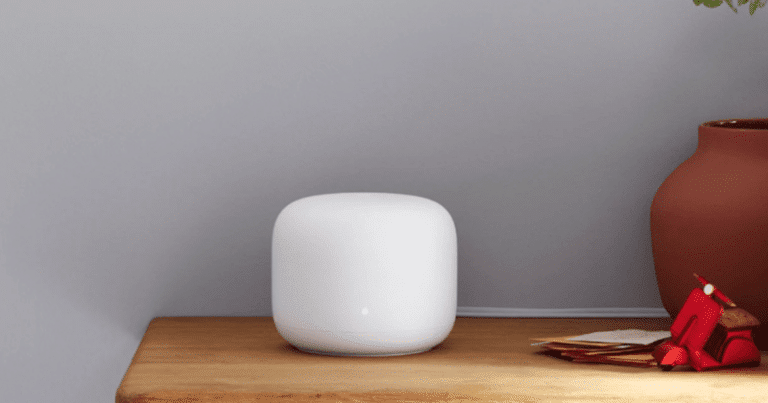
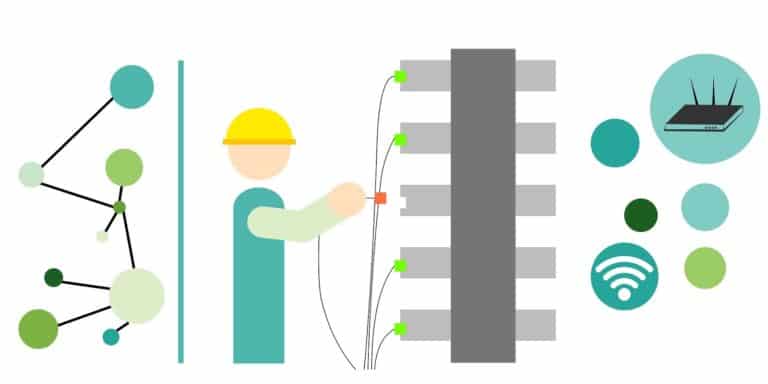
I have a Google mesh today and Frontier is offering to install (for free) 2 Eero 6 Pros with my 1 Gig service. Should I keep the Google mesh or switch to the Eero 6 Pro?
So, my home already has a Google WiFi mesh (AC-1304). One is plugged directly into the Spectrum WiFi modem and the other 2 positioned strategically around the house. I am now switching to Frontier 1G who is offering a set (2) of Eero 6 Pros to go with their 1 Gig service. Should I replace the Google WiFi mesh with the Eero or simply hookup up the existing Google WiFi mesh to the new Frontier 1G?
After reading the comparison of the Google Hub wifi system and the EEro Pro 6 mesh wifi system, I think I’ll stick to my Google Hub wifi I bought from Best Buy. My internet provider, Frontier, offers The EEro Pro 6 system for $399/Year. I ratter stay with Google Hubs (which I own) for $330 value than leasing the Eero Pro 6 wifi thru Frontier at $399/ per Year.
I agree with you